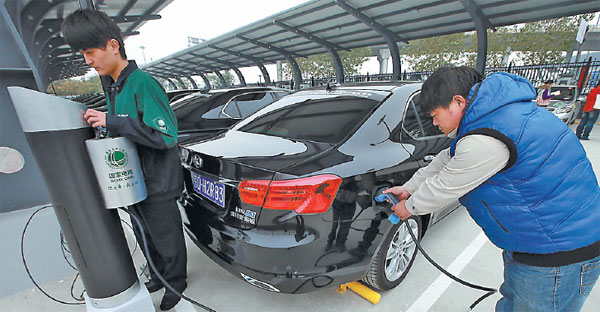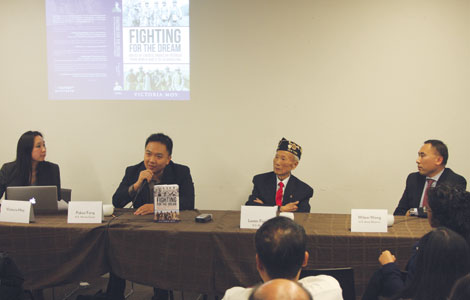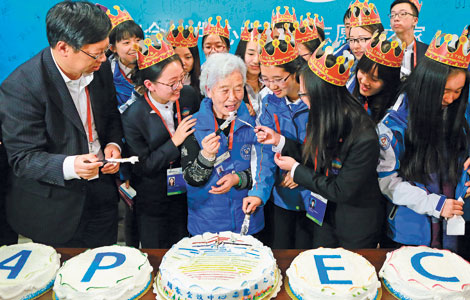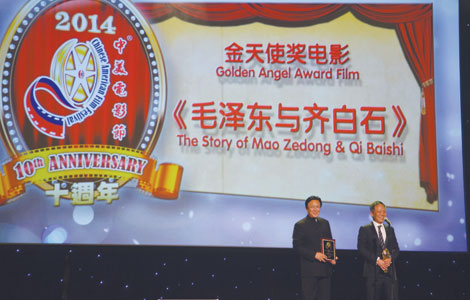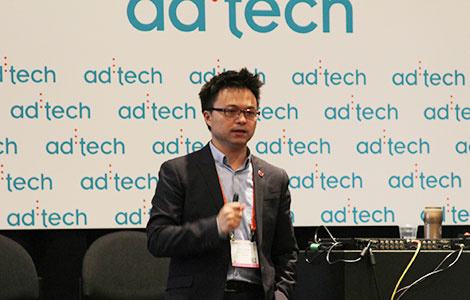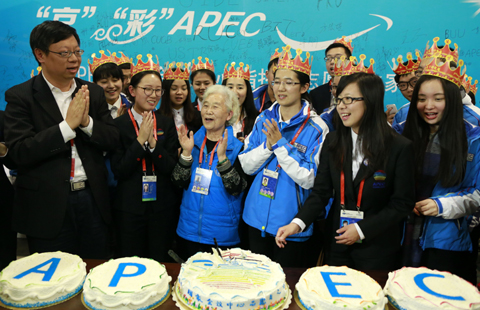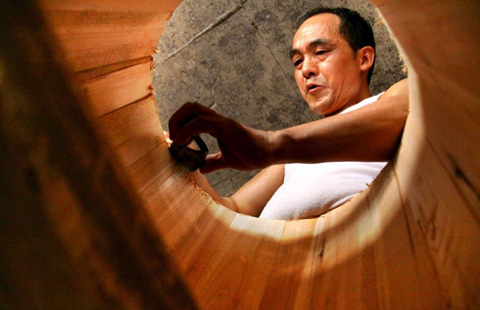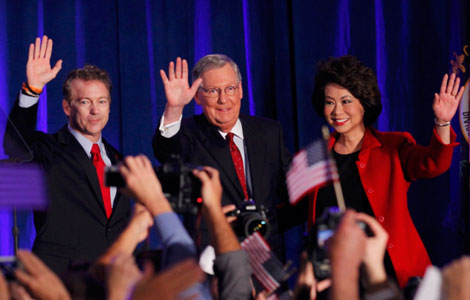New energy vehicles reduce smog
Updated: 2014-11-06 07:56
By Zheng Jinran(China Daily USA)
|
||||||||
|
Workers with Beijing Automotive Group are charging one of the 50 pure electric vehicles that will be used for the transportation for the APEC meetings in Beijing. Fu Ding / For China Daily |
Eco-friendly vehicles are playing a leading role in the transportation fleet for the ongoing APEC meetings in Beijing, showcasing China's national initiative to reduce air pollution by cutting exhaust emissions.
China will adopt cleaner fuel standards that are equivalent to the Euro V standards and promote new energy vehicles in key areas by 2017, according to the National Development and Reform Commission.
In keeping with that initiative, more than 100 new energy vehicles are part of the transportation fleet for the weeklong Asia-Pacific Economic Cooperation meeting, including 50 pure electric vehicles from Beijing Automotive Group that are not yet available on the commercial market and 53 hybrid vehicles from Infiniti.
"We will install more charging posts along the routes that will be frequently used during the event to guarantee the cars' regular service," said Hao Ziming, deputy head of Beijing Automotive.
Daniel Kirchert, president of Dongfeng Infiniti Motor Co Ltd, the official sponsorship of the APEC 2014 CEO Summit, said the company plans to promote hybrid and pure electric vehicles to cater to a growing demand for environmental protection in China, and the APEC meetings could be a good opportunity to tap into the promising market.
In the first nine months of this year, China saw a surge in sales of new energy vehicles, growing 280 percent to reach more than 38,000 units, according to a report from the China Association of Automotive Manufacturers.
Beijing, the host city of the 2014 APEC meetings, experienced three spells of severe smog in October, forcing the municipal government to take further measures to cut pollutants, including suspending the work of some polluting companies and closing some construction sites for days.
Growing concern over the possibility of air pollution during the APEC meetings has spurred the capital to do more to counter the problem. A report from the Beijing Municipal Environmental Protection Bureau shows that pollution from vehicle exhausts is a major source of particulate pollution in the capital.
In response, Beijing has promoted the use of new energy vehicles and removed vehicles that do not meet its emission standards from the roads.
Li Kunsheng, head of the department in charge of vehicle exhaust for the Beijing Municipal Environmental Protection Bureau, said in 2013 that more than 500,000 vehicles in the capital met the latest national standard on emissions, which could reduce exhaust emissions by 30 percent.
In an auto junkyard in Beijing, dismantled cars are strewed about, with forklifts carrying more to be broken into pieces.
"The cars destroyed in our plant have increased by three times in the past two years, especially in 2014, with more outdated cars coming in," said Guan Liang, head of the plant, adding that the yard has worked at full capacity in recent months.
Neighboring areas such as Hebei province have applied similar restrictions on vehicle exhausts and promoted the use of green vehicles to ensure clean air for the APEC meeting and beyond.
Among the more than 4,000 buses running in Shijiazhuang, the capital of Hebei province, more than 3,000 are fueled by natural gas, greatly reducing emissions, as part of government initiatives.
Zhang Yu in Shijiazhuang contributed to the story.
Most Viewed
Editor's Picks

|

|

|

|
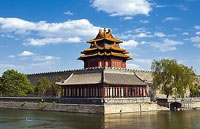
|
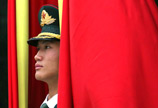
|
Today's Top News
Mexico cancels Chinese bullet train deal
China's wealthy look to make 'social impact' on education
Airline exec sees bright side for China and US
China, US must lead on climate: experts
China's coal solution could be in steam
Asian Americans supported Democrats in elections
Is Xiaomi ready for Western markets?
France to assist hunt for corrupt officials
US Weekly

|

|
